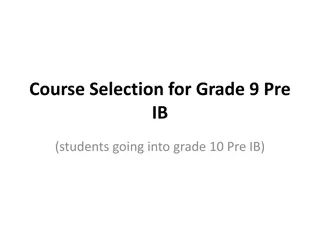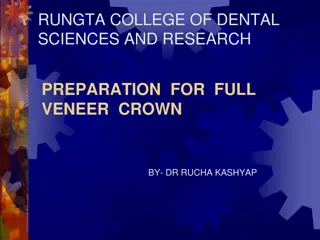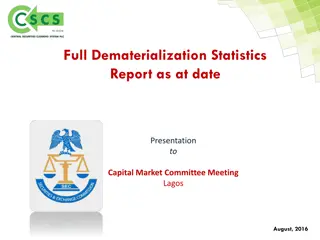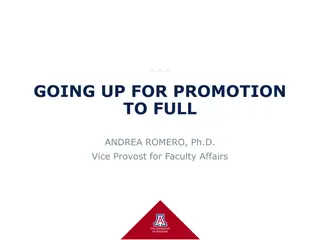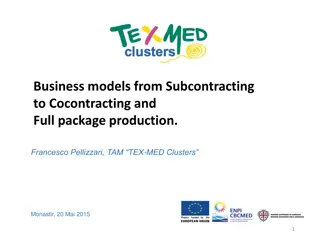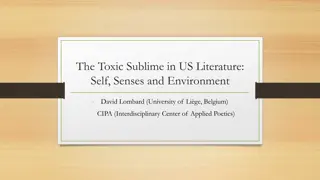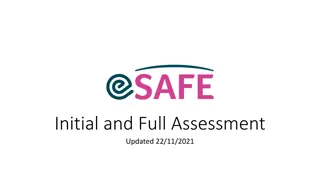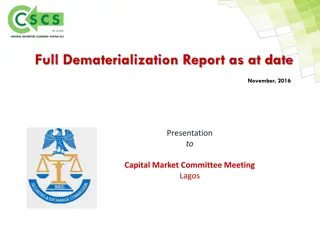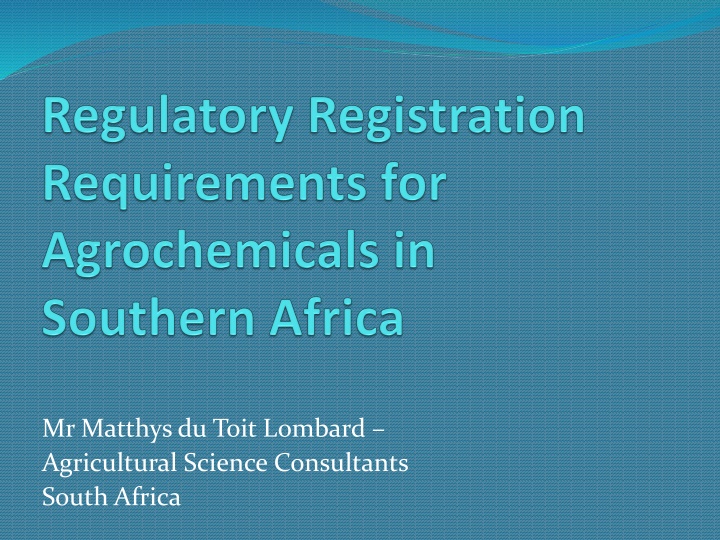
Southern African Development Community (SADC) Agricultural Initiatives
Explore the Southern African Development Community (SADC), its objectives, purpose, and initiatives in promoting regional trade and harmonizing food safety regulations for agricultural products in the region. Discover how SADC works towards enhancing agricultural production and trade opportunities in Southern Africa.
Uploaded on | 4 Views
Download Presentation

Please find below an Image/Link to download the presentation.
The content on the website is provided AS IS for your information and personal use only. It may not be sold, licensed, or shared on other websites without obtaining consent from the author. If you encounter any issues during the download, it is possible that the publisher has removed the file from their server.
You are allowed to download the files provided on this website for personal or commercial use, subject to the condition that they are used lawfully. All files are the property of their respective owners.
The content on the website is provided AS IS for your information and personal use only. It may not be sold, licensed, or shared on other websites without obtaining consent from the author.
E N D
Presentation Transcript
Mr Matthysdu Toit Lombard Agricultural Science Consultants South Africa
South Africa Largest economy on African continent Economy currently going through its longest ever period of uninterrupted economic growth Total area of 1.2 million km2and population of around 47 million people Economy: Agricultural production includes corn, wheat, sugarcane, fruits, vegetables, beef, poultry, mutton, wool and dairy products
SEARCH & SADC SEARCH was a CropLife initiative in which regulatory harmonization was the key goal. The project kicked off in 1996 and ran for 12 years. The SEARCH initiative achieved a great deal but could not overcome the political barrier . Therefore in 2008 when the opportunity presented itself to become a stakeholder in the SADC project, South Africa become a willing partner.
SADC Countries South Africa Angola Botswana Democratic Republic of the Congo Lesotho Madagascar Malawi Mauritius Mozambique Namibia Swaziland Tanzania Zambia Zimbabwe
What does SADC stand for? The Southern African Development Community (SADC) is an inter-governmental organization headquartered in Gaborone, Botswana. Its goal is to further socio- economic cooperation and integration as well as political and security cooperation among 14 southern African states. It complements the role of the African Union.
SADC objective. To promote regional trade through regional integration Greater access by SADC Member States exporters to the European Union and world markets for agricultural products.
SADC Purpose To harmonise: Food Safety control regulations Food Safety guidelines Food Safety procedures Through institutional strengthening in the SADC region in conformity with international requirements in order to increase exports while complying with food safety requirements.
The Regional Guidelines for the regulation of Crop Protection Products in SADC Countries were therefore developed by the SADC Member States to assist them to strengthen the regulatory framework for registration and quality control of plant protection products at national and SADC regional level.
FAO Food & Agricultural Organization of the United Nations FAO is a source of knowledge and information, and helps developing countries and countries in transition modernize and improve agriculture, forestry and fisheries practices, ensuring good nutrition and food security for all.
Plant Protection Products Guidelines Protect the health of humans, animals & plants Safeguard the environment Implement secure, safe, efficient and humane methods of controlling pests Provide transparency in trade of agricultural products within and outside the SADC region Raise public awareness on plant protection products Develop a legal framework for the management and control of plant protection products
National Plant Protection Products Legislation in the SADC region To provide guidance to countries to achieve sound pesticide management. Currently SADC Member States legislation and regulations dealing with the registration of plant products are not in accordance with international requirements. They do not take into account the transparency in the registration of plant protection products.
Registration of Plant Protection Products involves: Quality Control Use Storage Disposal Training Dosage Application Update of legal texts Accreditation of foreign manufacturers Licensing Labelling Efficacy Import/export procedures Good manufacturing processes Distribution
Legislative Framework for the SADC Region National governments are responsible for the necessary policy and national legislation to control plant protection products and other non-crop pesticides and the establishment of facilities and allocation of resources. The tasks include: Regulations Directives Guidelines
SADC Member States should therefore revise and update their existing pesticide legislation to bring it in line with the FAO Legislative Study 97. The legislation must also take into account arrangements applicable at the regional level. The main law and its accompanying subsidiary instruments should not only address the placing on the market and the end of the life cycle of pesticides but also its actual use. The main law should take into account the economic and social situation as well as specific technical requirements in the country such as: 1. Crops grown 3. Dietary Patterns 5. Environmental Situations 2. Pest Problems 4. Literacy Level
Key issues to be considered for the registration of products in South Africa 1. Label Information Identity of active ingredient and contents Name & address of registration holder Batch number Release date Warning & precautionary statements Resistance & incompatibility statements Registration Number Brief description of product Approved uses, use directions & dosage rates Hazard classifications & appropriate pictograms & colour bands
2. Trial design Use appropriate design Plot sizes should be big enough for data sampling Choose different geographical areas A minimum of 3 trails should be done Use replicates that are statistical plausible Rather do trails in different provinces than different seasons 3. Residue Trails A minimum of 3 trails irrespective of the mode of action of the pesticide tested Use maximum number of applications as indicated on the label Test 1 X & 2 X rates Specify the type of formulation used The formulation tested should be the one intended for registration
4. Data Evaluation/ Assessment Site with history of disease / pest should be used Pre-spray evaluation to determine level of infestation / disease severity Untreated control scores should be presented Use same parameters throughout At least 3 recordings should be made Use appropriate rating type(s) and scale
New Application vs Generic Product Application New Product Generic Product This is a product containing an active pharmaceutical ingredient that has not previously been registered in SA This is a product that is similar to a current registered product in that it has: The same active ingredient Same concentration of active ingredient Same dosage form 4. Same dosage on an active ingredient basis Same use pattern 1. 2. 3. 5.
Agricultural Science Consultants We offer Research & registration services specifically in South Africa & branching out to the rest of Africa We are the largest independent company in South Africa & can assist in all registration issues in the South Africa We have been doing business in South Africa for over 10 years We do efficacy based field and laboratory work for agricultural, household and related industries We can compile the registration dossiers for your company We guarantee our work
To achieve success we do backup trails and inoculate our trails We work with farmers across South Africa and we also have 2 research farms. Our employees are highly qualified & dedicated Many efficacy and marketing trials are being done at our 2 research farms We have laboratories where we make inoculum for trail purposes as well as diagnostic purposes In process of being GLP and ISO 17025 accredited
Questions - Email us at: science@agricscience.com matthys@agricscience.com Or visit our website at www.agricscience.com Thank you








